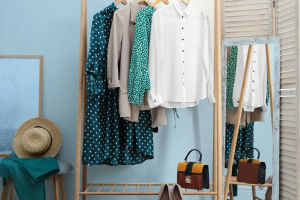Rugs That Fit Just Right
Rugs can completely change the mood of a room—adding warmth, texture, and structure. But even the most beautiful rug can fall flat if it’s too small or awkwardly placed. The trick? Choosing the right size and knowing exactly where to put it.
For Lykkers ready to level up their home with the perfect rug, this guide will walk you through the basics of size, placement, and layout—so your space feels polished and pulled together from the ground up.
Part 1: Pick the Right Rug Size for Each Room
Choosing a rug isn’t just about the color or pattern—it’s about proportion. The right size can make your room feel bigger, more grounded, and more balanced. In this section, we’ll break down what size works best for different spaces.
For the living room: go big or layer it
In most living rooms, bigger is better. Aim for a rug that’s large enough to fit at least the front legs of all your furniture. If that’s not possible, layer a smaller rug over a large neutral one to get the full look without the full price.
For the dining area: match your table shape
Choose a rug that mimics the shape of your dining table—round with round, rectangle with rectangle. Make sure there’s at least 24 inches of extra rug on all sides so chairs stay on the rug, even when pulled out.
For the bedroom: frame the bed, not just the space
In bedrooms, your rug should extend at least 18–24 inches beyond the sides and foot of the bed. Alternatively, try two smaller rugs on either side for a cozy hotel-like feel—perfect if you have limited floor space.
For small areas: think of the rug as an anchor
In entryways, kitchens, or reading nooks, a rug helps define the space. Go for sizes that match the scale—runners in hallways, small rectangles by sinks or bedsides. You want it to feel intentional, not like an afterthought.
Measure first, shop second
Before you fall in love with a rug online, take a few minutes to tape out the size on your floor. It helps you see the footprint in real time and avoids the all-too-common “it looked bigger in the photo” disappointment.
Part 2: Place Your Rug Like a Pro
Once you’ve chosen the right size, where you place your rug makes all the difference. This next part covers layout tips and styling tricks that make any rug feel like it truly belongs in your space.
Center it with the furniture, not the room
Your rug doesn’t always need to be dead-center in the room. Instead, align it with your main furniture layout. In a living room, that usually means centering it under your coffee table and making sure it connects your seating.
Keep edges and walkways clear
Make sure your rug isn’t too close to the walls—leaving 12–18 inches of exposed flooring around the rug helps the room feel open. In walkways, ensure the rug edges don’t curl up or trip anyone. A rug pad can help keep things flat and secure.
Let the rug define zones
In open-concept spaces, a rug is your best tool for separating areas. Use one rug for the living zone, another for the dining spot, and maybe a third for a reading corner. It visually organizes the space and gives each section a sense of place.
Layer for texture and style
Don’t be afraid to layer a smaller decorative rug over a larger natural fiber rug (like jute or sisal). This adds depth and gives you flexibility with bold patterns or cozy textures without overwhelming the room.
A great rug does more than warm your feet—it sets the tone for the whole room. Lykkers, when you choose the right size and place it with intention, your rug becomes the foundation of comfort and style. Take your time, trust your eye, and remember: the floor is your fifth wall—make it count.
-
 Train Half-MarathonReady to conquer your first half-marathon? Discover step-by-step training tips to cross the finish line confidently!
Train Half-MarathonReady to conquer your first half-marathon? Discover step-by-step training tips to cross the finish line confidently! -
 Hidden Codes in ArtThe Secret Codes Hidden in Classical Paintings Will Change How You See Art Forever!
Hidden Codes in ArtThe Secret Codes Hidden in Classical Paintings Will Change How You See Art Forever! -
 Reclaim Your WardrobeFrom Trash to Trendy: 3 DIY Upcycles That'll Change How You Dress Forever!
Reclaim Your WardrobeFrom Trash to Trendy: 3 DIY Upcycles That'll Change How You Dress Forever!
Copyright © zogu 2021 - 2025. All Right Reserved.